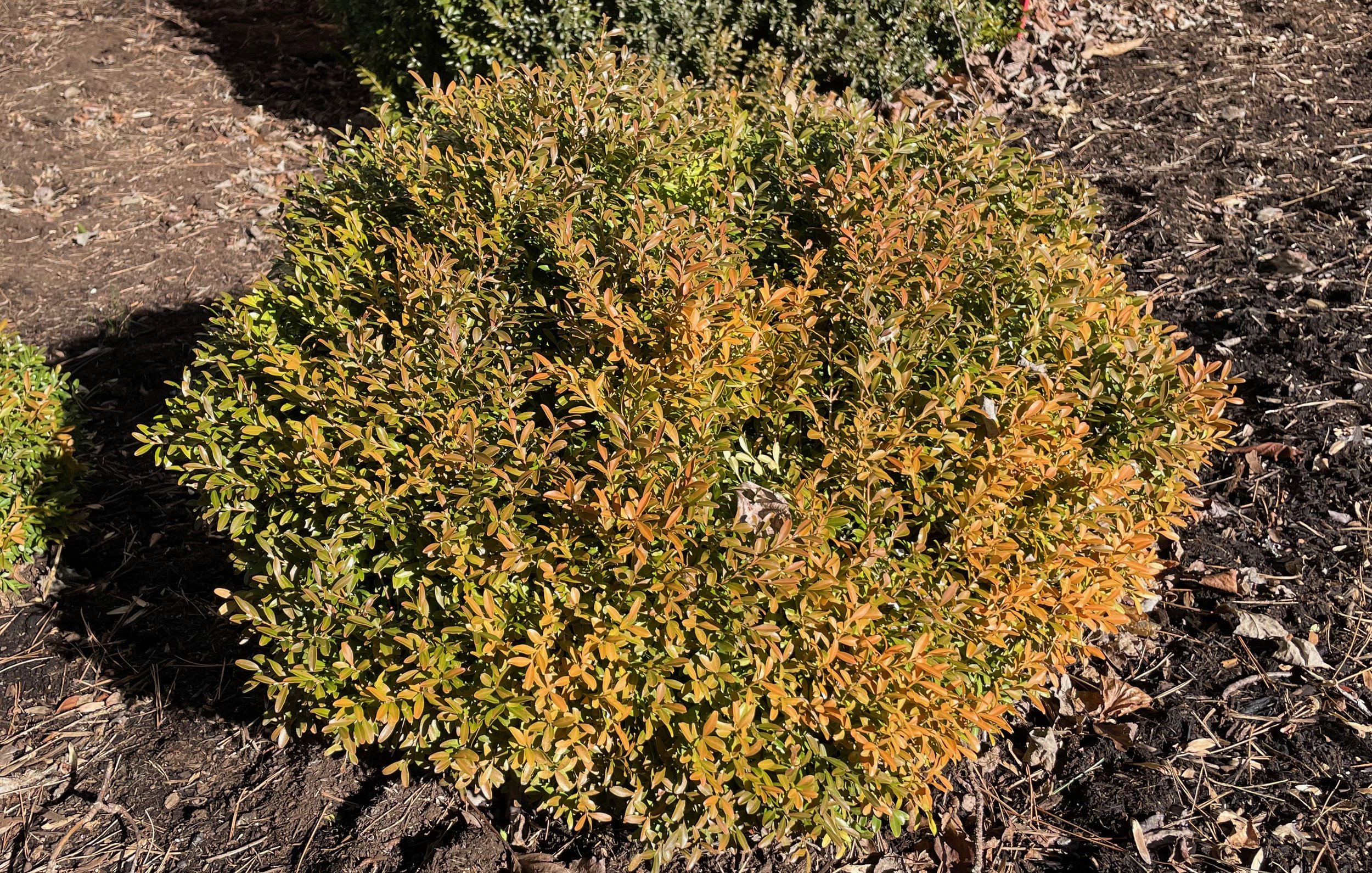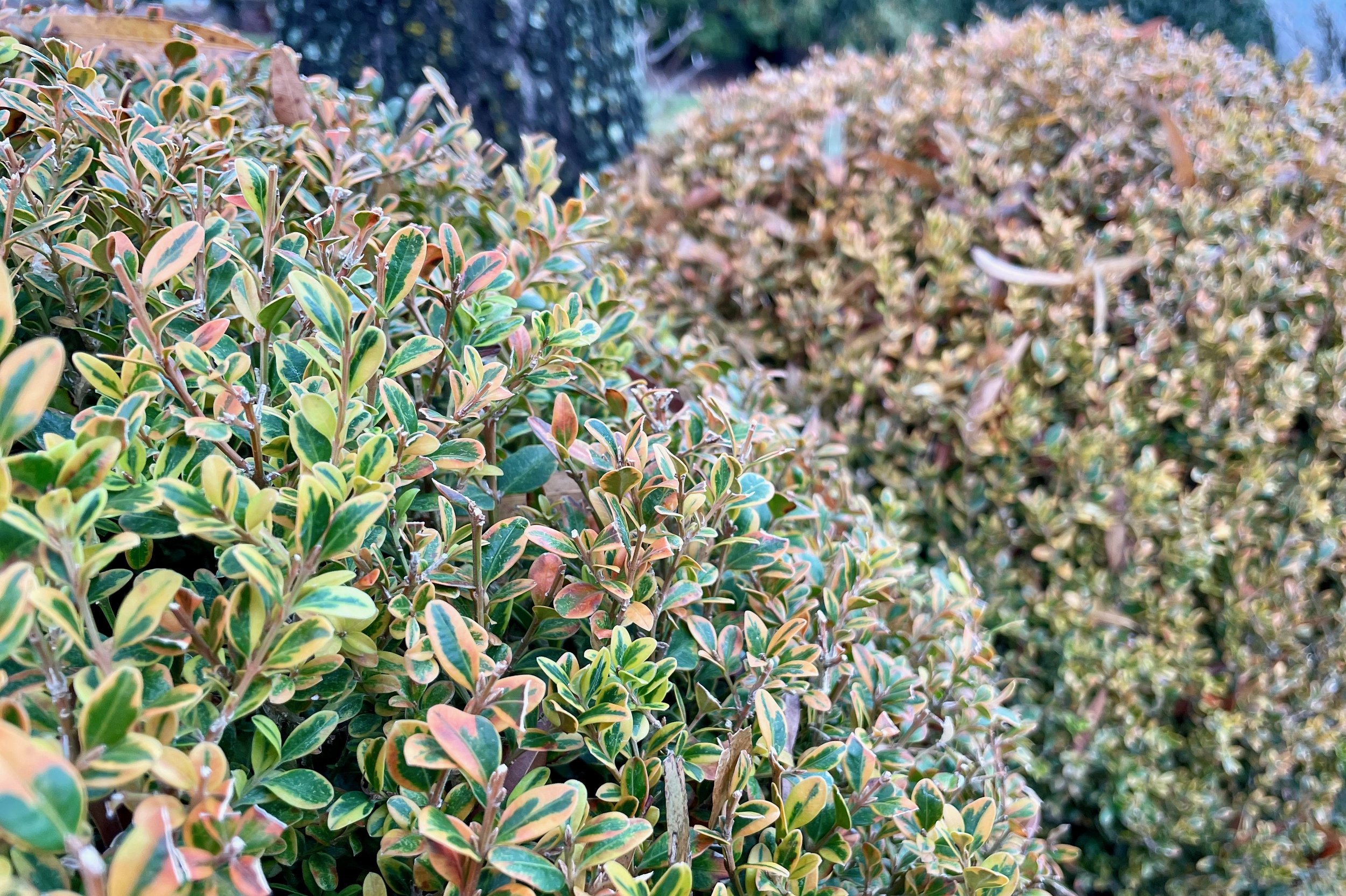Several species of broad-leaved evergreens and conifers exhibit winter orange-to-purple coloration, referred to as "bronzing." The production of chlorophyll slows, so purple-to-orange anthocyanin pigments present in the leaves are more visible. Drought stress resulting in decreased transpiration can exacerbate the situation. The discoloration can appear on just the tips, one side, or the whole plant. Whether Buxus, Chamaecyparis, or other species, this pigment change is not harmful to the plant. Bronzing is easily distinguishable from other issues, as most diseases either attack lower foliage, cause defoliation, or result in an obvious discolored branch or sector of the plant, not a relatively uniform color change across the surface - dig into a bronze boxwood and you should find plenty of green.
The desiccating effects of wind and sun can result in bronzing as a stress response, especially if the plant is already drought-stressed. Full-sun exposure tends to result in a greater degree of discoloration – and if in partial shade, the “sunny” side may be bronze. Multiple freeze/thaw cycles and south to southwest exposure present the greatest chance of bronzing. Boxwood planted in a more protected area including the north or east side of a structure are more apt to avoid bronzing.
Example of bronzing on Buxus sinica var. insularis ‘Franklin’s Gem.’ This specimen is located on the southwest side of a building – partly shaded by deciduous trees in summer, but quite sunny in winter.
Species and cultivars of boxwood vary as to the degree of bronzing. Note bronzing is not an indicator of a lack of cold hardiness. Buxus x ‘Green Gem’ tends to bronze with full sun exposure but is one of the hardiest boxwood, rated to USDA Hardiness Zone 4. Our own NewGen Freedom (cold hardy to Zone 5) can also bronze if planted in full sun, especially if south-facing and exposed to wind, but seldom suffers cold damage such as desiccated shoot tips. Variegated boxwood may only show discoloration on the light-colored leaf margins. The good news for any discolored boxwood is the rapid recovery in spring when warmer temperatures and ample moisture boost chlorophyll production. Green is right around the corner!
The lemon-lime leaf margins of some variegated boxwood such as Buxus microphylla Golden Dream (‘Peergold’) take on an orange cast when temperatures drop. The crisp color contrast returns in spring with warmer temperatures.


